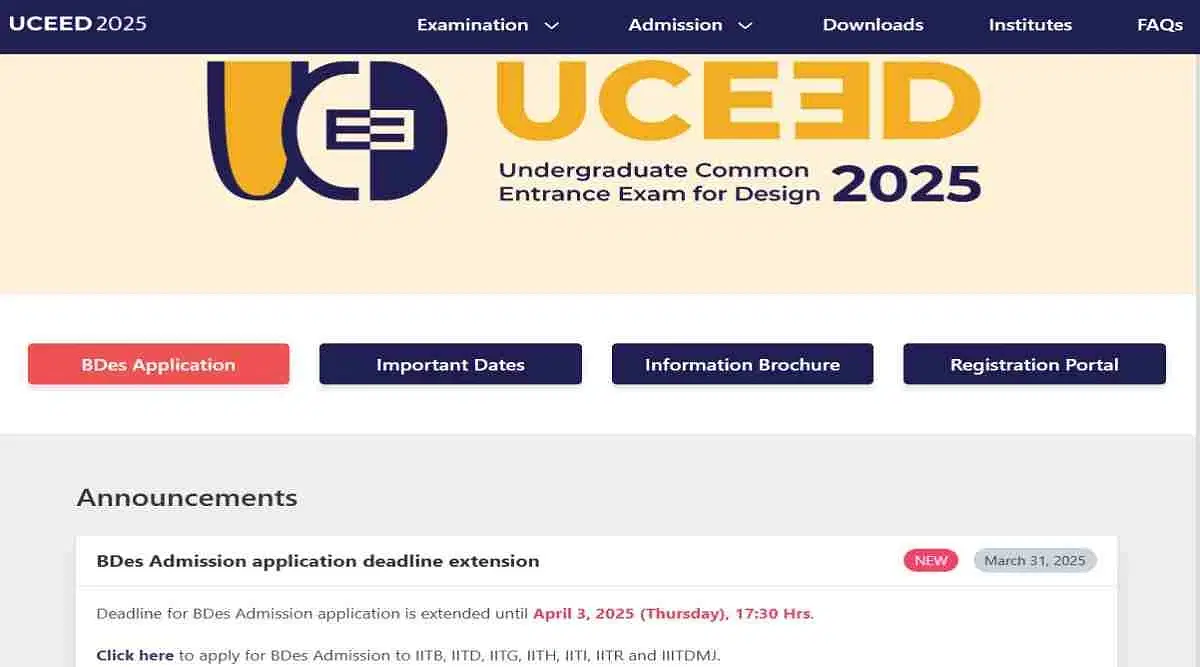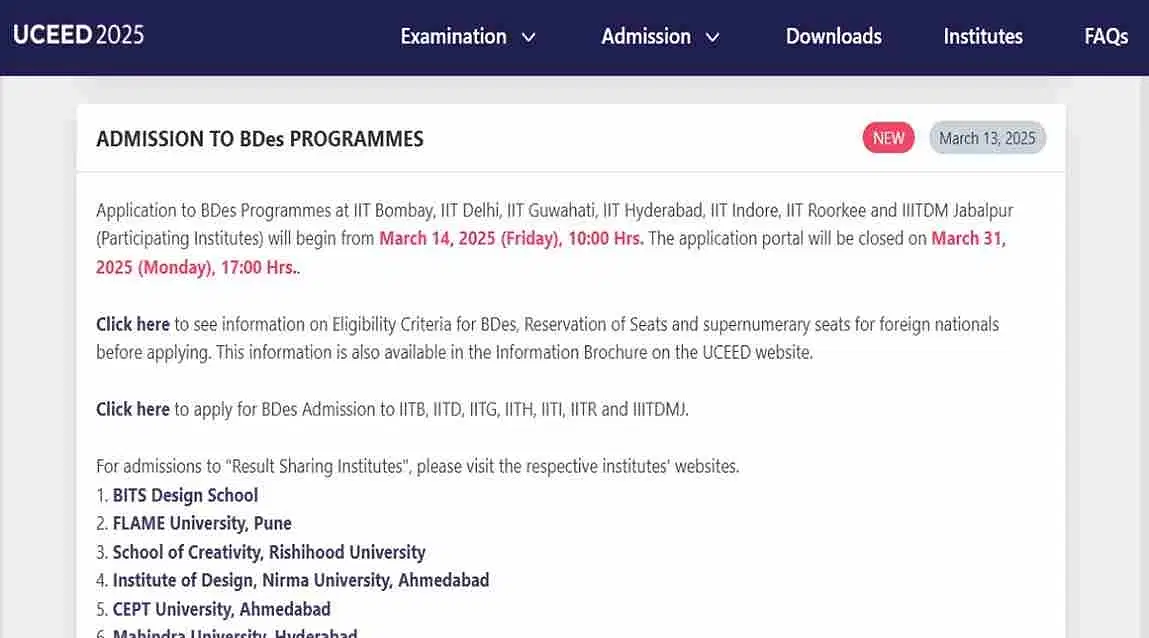The NID DAT Tie Breaking Policy for B.Des Admissions 2025 assesses and evaluates the performance of each candidate very meticulously to maintain a fair ranking system. The systematic evaluation procedure of NID DAT tie breaking rules allows candidates to get a complete assessment where both design competencies and analytical performance are weighed equally.
Table of Contents
Every year, the National Institute of Design (NID) conducts the Design Aptitude Test (DAT) to choose students for its well-deemed Bachelor of Design (B.Des) program. Because of how competitive the exam is, there are instances in which some candidates are observed to have obtained equivalent scores. NID DAT has created a thorough tie-breaking policy that handles such scenarios through fair means. In this article, we are going to know about the tie-breaking policy, in detail, that has been established for both DAT Prelims and DAT Mains so that candidates have a crystal clear understanding of how rankings are determined during ties.
Understanding the NID DAT Structure
The NID DAT is a two-stage evaluation process:
- DAT Prelims: A written examination that is meant to analyze and assess design aptitude with the help of questions that are objective and subjective.
- DAT Mains: A practical examination that carefully evaluates the practical skills and creativity of a candidate.
The final standing of a candidate and their potential admission into the B.Des program is determined by their performance in these stages.
Tie Breaking Policy for NID DAT Prelims
The National Institute of Design (NID) assesses and evaluates the performance of each candidate very meticulously in the Design Aptitude Test (DAT) Prelims for the Bachelor of Design (B.Des) program to maintain a fair ranking system. The National Institute of Design uses a predefined structured tie-breaking policy to establish ranks when different candidates earn the same total score points. To understand this, the applicants must be aware of what is a good score in NID DAT 2025.
The sequential criteria applied are:
- Higher Marks in Part B (Subjective Section): Candidates who obtain more points in the Part B subjective segment gain priority because this section evaluates creativity and problem-solving abilities, together with design thinking capabilities. NID puts a major emphasis on this section because it aims to determine a candidate's innate design aptitude as well as their innovative potential.
- Higher Marks in Part A (Objective Section): If a tie still exists after the evaluation of the scores of Part B, the selection process continues with Part A (Objective Section) assessment because candidates who score better in this section maintain higher ranking positions. The objective-type questions in Part A provide a detailed evaluation of core abilities through questions that assess observation skills and general knowledge, along with fundamental analytical competencies.
- Equal Ranking: When both Part A and Part B scores match exactly, NID puts these candidates at identical positions. The institute upholds fair treatment through this method which also demonstrates their understanding of similarly talented candidates.
The systematic evaluation procedure of NID DAT tie-breaking rules allows candidates to get a complete assessment where both design competencies and analytical performance are weighed equally. NID designs its tie-breaking criteria to maintain both integrity and fairness of its admission process. This is to make sure that candidates who have exceptional design aptitude can be properly acknowledged. The candidates can find the best design colleges apart from NIFT and NID.
Tie Breaking Policy for NID DAT Mains
During the second and most demanding stage of NID’s admission process, the DAT Mains tests candidates through practical assessments that evaluate their skill in design alongside their creative abilities. NID implemented thorough procedures to break ties because this evaluation holds utmost importance through a comprehensive tie-breaking policy.
The DAT Mains examination tie-breaking methods function through the following sequence:
- Higher Marks in DAT Mains: Among candidates who have opted for the DAT Mains examination, the one with better marks in the exam overall receives a higher rank. The test breaker assesses design abilities together with the ability to perform under respective conditions.
- Higher Marks in DAT Prelims: If a tie remains even after the DAT Mains scores have been considered, the candidate who scored better in DAT Prelims stands higher in ranking. This step is used by the authority to make sure that the institute recognizes the practical skills as well as foundational knowledge that were assessed during the initial stage of the admission process.
- Higher Marks in Part B of DAT Prelims: Among candidates who remain tied after scoring evaluation, the selection goes to the applicant who scored better in Part B in DAT Prelims, which emphasizes design aptitude evaluation through subjective methods.
- Higher Marks in Part A of DAT Prelims: If necessary, the candidate who achieves superior results in Part A of the DAT Prelims exam receives a higher ranking through objective evaluation of their general knowledge and analytical abilities
- Equal Ranking: When there is an extremely unlikely situation where candidates stand on the same page and have identical scores across all the criteria mentioned above, NID provides the same rank to the respective candidates and this is what reflects the unwavering commitment of the institution to fairness.
NID has established this thorough NID DAT tie-breaking rule to demonstrate its commitment to admission practices that are free from discrimination and biases. NID uses a methodical evaluation system to review candidate achievements across multiple dimensions which guarantees that it selects the most qualified applicants to maintain B.Des program standards.
Also Check:
NID DAT Tie-Breaking Criteria
Candidates can find the NID DAT tie breaking criteria for all the rounds in the table below.
|
NID DAT Stage |
Criteria Level |
Evaluation Basis |
|
DAT Prelims |
1 |
Higher marks in Part B (Subjective) |
|
2 |
Higher marks in Part A (Objective) |
|
|
3 |
Equal ranking if the tie persists |
|
|
DAT Mains |
1 |
Higher overall marks in the DAT Mains |
|
2 |
Higher marks in DAT Prelims |
|
|
3 |
Higher marks in Part B of the DAT Prelims |
|
|
4 |
Higher marks in Part A of the DAT Prelims |
|
|
5 |
Equal ranking if the tie persists |
Significance of the Tie-Breaking Policy
NID DAT adopts a tie-breaking policy that establishes fair, consistent admission decisions based on merit. This policy matters most in competitive scenarios since total scores often match between candidates. NID uses a methodical approach to handle such cases because its fundamental belief involves recognizing genuine design ability.
1. Ensures Fair and Merit-Based Selection
When multiple students achieve equal points in the exam, this policy conducts fair differentiation by analyzing their performance in individual parts. By using the policy, students cannot be ranked wrongly because of matching scores which helps maintain a balanced playing field.
2. Focus on Design Aptitude
The policy enhances the priority of evaluation sections demonstrating creative design thinking, such as Part B of the DAT Prelims and the DAT Mains performance. Subjective sections prove superior to objective assessments in determining the design of education success potential for students.
3. Encourages Holistic Preparation
Students prepare fully for the sections of the exam because they understand these sections play important roles in the tie-breaking process. The policy prevents students from spending excessive time only on objective questions and forces them to distribute their efforts more equally across all exam components.
4. Promotes Transparency and Confidence
The policy can be easily accessed publicly, and anyone can understand its contents. An open evaluation policy generates trust within potential students and guardians to ensure their marks matter equally and candidates receive proper assessment.
5. Reflects NID’s Vision
The policy showcases NID’s dedication to high-quality education and creative excellence through its precise method of differentiating candidates with matching scores. The scoring policy provides exceptional design students with the chance to study at the flagship design institute in India despite comparable scores.
Read More: NID Fee Structure and Courses List 2025
Rechecking Process for DAT Prelims Scores
According to NID’s official rechecking procedure, candidates who want their DAT Prelims scores examined can use the official rechecking process established by the institution. By following this process, candidates can verify that their scores have been properly recorded and evaluated. The rechecking process starts when candidates file an official request to the institution while paying the prescribed fee within the designated time window.
It's important to note that the rechecking process only confirms the correct totaling of marks while checking if all the answers have been counted in and marked for evaluation, but does not involve reassessing the answers. The official NID admissions handbook contains all the required information regarding the detailed instructions and deadlines for the rechecking process.
Implications of NID Tie Breaking on Final Merit List and Seat Allotment
Seat allocation decisions for the B.Des Program start from the final merit list, which the tie-breaking policy significantly affects. Different ranks are established through the tie-breaking criteria when multiple candidates share identical scores to determine sequential seat allocation preferences. The admission policy maintains transparency through this method to ensure merit-based selection of candidates.
Candidates need to understand that the results within particular segments of the DAT exam directly control their final ranking position according to the tie-breaking policy. Thus, this can subsequently impact their final ranking as well as their chances of securing admission to their preferred program or course.
Recommendations for NID DAT Candidates
Candidates should consider the following if they want to navigate the tie-breaking criteria effectively:
- Focus on Subjective Sections: Given the emphasis on Part B of the DAT Prelims and the DAT Mains in the tie-breaking policy, it is really important to stay ahead in subjective responses as well as practical design tasks
- Consistent Performance: Aim for a performance that has the most perfect blend of balance as well as consistency across all sections to secure victory, especially for the impact of tie-breaking
- Stay Informed: Visit the official website of NID for NID's official communications and stay alert for any updates or changes in terms of admission policies.
Conclusion
The policy established by NID for breaking ties is crucial to be understood by prospective students who want to get admission to the B.Des program in 2025. The policy confirms that candidates must prepare thoroughly for every exam component and all the segments of the paper to succeed. Prospective candidates who concentrate their efforts on the areas highlighted in the tie-breaking criteria will have higher chances for success.
The strategic preparation and staying up-to-date with all the exam-related information will help students optimize their chances of securing their dream position at NID.

























POST YOUR COMMENT